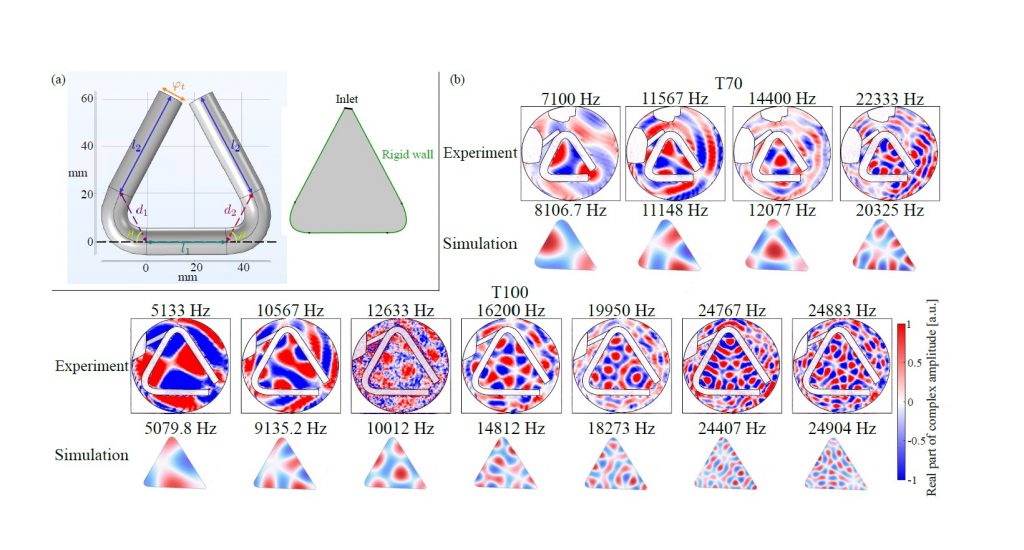Proof of resonance in open-ended instrument wows, and it could exist in circles and squares too.
From the Journal: JASA Express Letters

WASHINGTON, May 6, 2025 – The triangle is a small instrument made of a metal rod bent into a triangle shape that is open at one corner. While small, its sound is distinct, with multiple overtones and nonharmonic resonance. But what causes the surprisingly powerful sound?
“The triangle instrument produces enchanting and beautiful tones, raising deep and profound questions about the connection between music and physics,” author Risako Tanigawa said. “Optical sound measurement has only been applied to limited subjects until now. By observing the sound field of a triangle for the first time, we captured phenomena not previously explored through microphone observations.”
In a paper published this week in JASA Express Letters, published on behalf of the Acoustical Society of America by AIP Publishing, Tanigawa and colleagues at NTT Corporation and Waseda University in Japan captured sound fields around musical triangles.
Sound moving through the air causes vibrations that affect the air density and the speed at which light travels through the air. Specialized photographic methods known as acousto-optic imaging can capture the differences in light intensity to study detailed characteristics of sound vibration patterns.
As an example of these patterns, a standing wave is created when two identical sound waves are superimposed on top of each other, moving in opposite directions through the instrument’s metal material to produce sound. Eigenfrequencies, or natural frequencies, occur when an instrument can sustain a standing wave without external forces. Resonance occurs when external forces match this natural frequency, increasing the amplitude of sound waves to create a louder sound.
“There is still room for discussion, but the observation of standing waves in a semi-open space is intriguing because it is generally known that resonance occurs in shapes with closed sides, but our experimental results suggest it may occur in semi-open space as well,” Tanigawa said.
With this project, the researchers wanted to understand the physical properties of the triangle instrument that create these conditions, test assumptions about the contribution of the triangle shape, and capture clear documentation through pictures of the sound waves around the triangle. Next, they want to further investigate the impact of the open space at the corner of the triangle on resonance.
“Musical instruments play a significant role in human lives, serving cultural, social, and physical functions,” Tanigawa said. “Understanding the physical properties of an instrument provides benefits such as preserving traditional musical instruments and providing insights for instrument makers, players, and development of electronic instruments.”
###
Article Title
How the musical triangle’s shape influences its sound
Authors
Risako Tanigawa, Kenji Ishikawa, Noboru Harada, and Yasuhiro Oikawa
Author Affiliations
NTT Corporation and Waseda University
